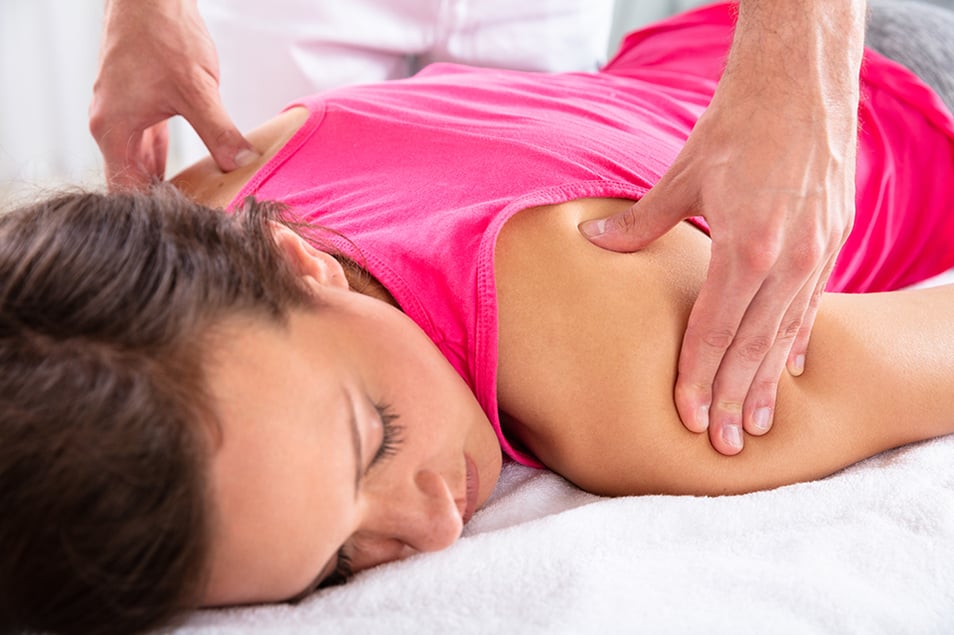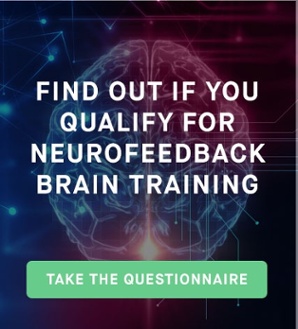
You’ve most likely heard the phrase, “I have to get the knots out of my back.” No, they’re not referring to literal knots. They’re talking about trigger points. These tight, sensitive areas of your body have typically experienced stress or injury, constricting your muscles and leading to stiffness and chronic pain. Northport Wellness Center offers the perfect solution to relieve pain: trigger point therapy.
The following is a brief explainer about trigger points, including causes, symptoms, and more.
What are trigger points?
In simple terms, a trigger point, also known as a myofascial trigger point, is a hard, stiff, rocklike muscle—commonly referred to as a ‘knot’—that causes aching and general discomfort. Of course, your muscles aren’t actually tangled up in a ball, but it often feels like that due to its associated pain. It may feel sensitive to touch, and resemble a hardness or lump.
These areas of the body are sensitive to pressure, exhibit decreased blood circulation, and experience increased muscle contraction. They are also prone to spasms. Having many trigger points can lead to myofascial pain syndrome, which is a chronic disorder characterized by deep, aching muscle pain that persists or worsens.
Trigger points can be classified into several groups:
- Primary/Central: based at the center of a muscle; cause severe pain
- Secondary/Satellite: develop in response to a primary/central trigger point
- Active: tender when pressed
- Inactive/Latent: non-painful lumpy areas that can increase muscle stiffness
- Diffuse: occur in patients with postural deformities
- Attachment: form at tendo osseous junctions
- Ligamentous: arise in ligaments
What causes them?
Trigger points are caused by stress, overuse or misuse of a muscle, misalignments, accidents, or disc and other spinal problems. They can also develop from improper form or lack of stretching before physical activity. When muscles are overstimulated, they’re unable to relax, leaving them in a prolonged contracted position. This reduces blood flow, blocking off oxygen and leading to inflammation. As the stress or injury worsens, fascia—a band of connective tissue that attaches to muscles—compress the muscle it surrounds.
What are the symptoms?
Trigger points cause a particular type of pain. It’s usually a dull ache in a specific area, with a clear center. The affected limbs can feel stiff or heavy. The spot becomes sore and sensitive to pressure. It can often flare up during exercise or in different temperatures. However, sometimes exercise and certain movements can alleviate discomfort. Massages and hot baths sound inviting, but never fully relieve the pain.
What conditions are associated with trigger points?
Trigger points are associated with the following conditions:
- Muscular Chest Wall Pain
- Shoulder Pain
- Tennis Elbow
- Lower Back Pain
- Sciatica
- Knee Pain
- Ankle Pain
Oftentimes, these points are mistaken for other conditions such as fibromyalgia, myalgia, muscle staring, or chronic joint sprain. If pain persists after an accident or trauma, it’s likely you’ve developed trigger points.
How does trigger point therapy alleviate the symptoms?
Trigger point therapy combines several clinically-proven relief methods to loosen the taut muscles and improve blood flow to the contracted area. Immediately afterward, patients experience lessened pain, soreness, tightness, and discomfort as they begin to heal. The goal of trigger point therapy is to improve blood circulation in the affected area, stretch the taut muscle band, and release the surrounding fascia.
What is a procedure like?
Patients will typically undergo multiple sessions to achieve sustained healing and symptom relief, utilizing manual trigger point therapy, dry needling, or a combination of the two.
Manual Trigger Point Therapy
Manual therapy adds hands-on pressure to the trigger point, which can be a bit uncomfortable for the patient, but provides instantaneous relief. The four major techniques target the trigger point, and the fascia release. Technique I focuses on compression of the trigger point, while Technique II stretches the taut band. Technique III addresses the release of the connective tissue and fascia around the trigger point. The final method, Technique IV, releases the tissue and fascia between muscles.
Dry Needling
Similar to acupuncture, dry, sterile needles prick the trigger point, stimulating oxygenation, reducing inflammation, and improving circulation. Although it produces a brief contraction known as a local twitch response, it ultimately reduces tension.












